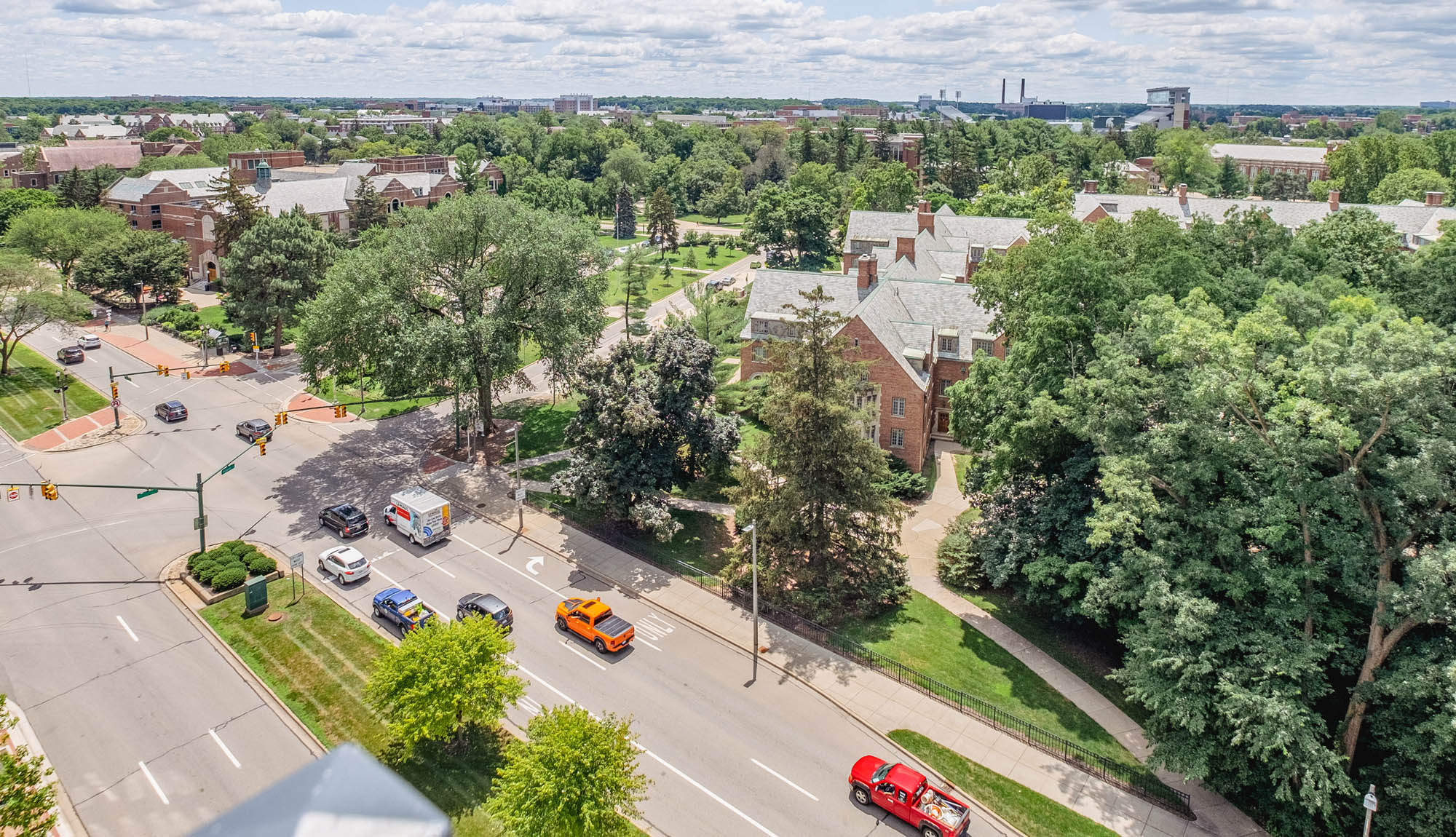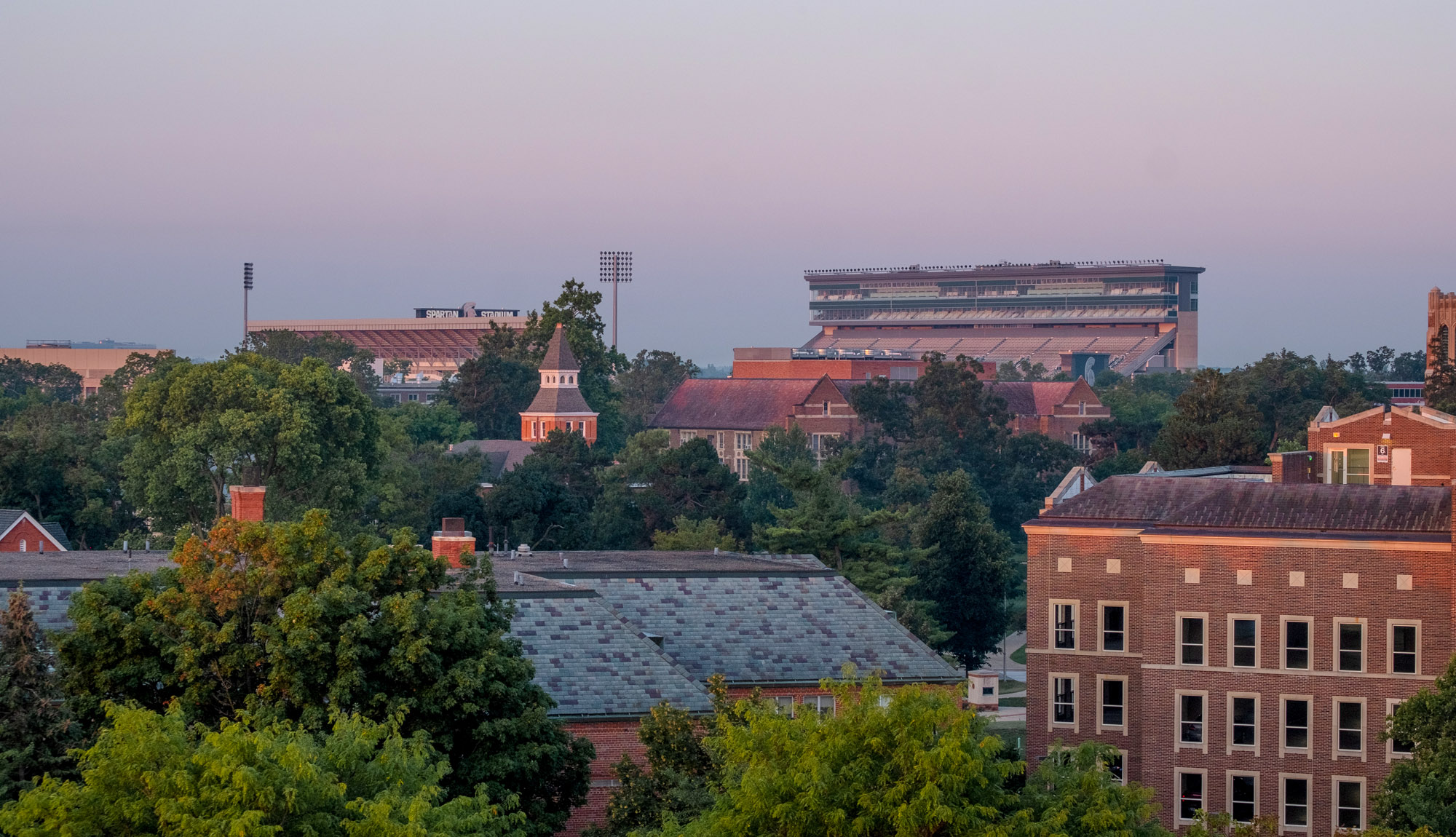
MSU has established a goal of cutting greenhouse gas emissions to 292,934 metric tons of CO 2, a 50% reduction from 2010 baseline.
Key Initiatives
New Financial Model
 MSU is committed to updating its financial and budget processes. As a first step, the university has established an internal steering committee and engaged a consultant to assist with a thorough review of its financial organization and operations to gauge readiness for budget reforms. The review will assess current processes, systems and tools, as well as deliver a road map to support a transition to a new budget model. It also will identify opportunities to enhance central financial services. The review will conclude with a report (anticipated summer 2022) with providing a high-level timeline and summarize next steps for budget model redesign. This work is the first step in developing a comprehensive financial model and budget process that aligns resources with strategic priorities and creates greater university-wide efficiency and effectiveness. It also will support the university’s needs as it expands and diversifies revenue sources.
MSU is committed to updating its financial and budget processes. As a first step, the university has established an internal steering committee and engaged a consultant to assist with a thorough review of its financial organization and operations to gauge readiness for budget reforms. The review will assess current processes, systems and tools, as well as deliver a road map to support a transition to a new budget model. It also will identify opportunities to enhance central financial services. The review will conclude with a report (anticipated summer 2022) with providing a high-level timeline and summarize next steps for budget model redesign. This work is the first step in developing a comprehensive financial model and budget process that aligns resources with strategic priorities and creates greater university-wide efficiency and effectiveness. It also will support the university’s needs as it expands and diversifies revenue sources.
Comprehensive Facilities and Land Use Plan
 Work is well underway to consider how Michigan State University’s East Lansing campus and statewide facilities should align with the university’s long-term strategic goals and needs. Phase I of the in-depth process to develop a new plan is underway. This phase included thorough review of existing planning documentation, a site visit and collecting input through survey and listening sessions with a broad base of university stakeholders, including students, faculty, staff, alumni and community members. The multiple perspectives and data gathered in phase I are being synthesized into a comprehensive view of the present conditions of MSU's campus and facilities. Ultimately, the process will result in a flexible framework that will inform the creation of a comprehensive University Facilities and Land Use Plan. The plan will serve as a road map guiding MSU's future campus and statewide facilities composition for the next generation. This framework provides an opportunity to advance equity, bolster community health and improve support systems for students, faculty, staff, alumni and visitors through the physical environment of MSU's land and facilities.
Work is well underway to consider how Michigan State University’s East Lansing campus and statewide facilities should align with the university’s long-term strategic goals and needs. Phase I of the in-depth process to develop a new plan is underway. This phase included thorough review of existing planning documentation, a site visit and collecting input through survey and listening sessions with a broad base of university stakeholders, including students, faculty, staff, alumni and community members. The multiple perspectives and data gathered in phase I are being synthesized into a comprehensive view of the present conditions of MSU's campus and facilities. Ultimately, the process will result in a flexible framework that will inform the creation of a comprehensive University Facilities and Land Use Plan. The plan will serve as a road map guiding MSU's future campus and statewide facilities composition for the next generation. This framework provides an opportunity to advance equity, bolster community health and improve support systems for students, faculty, staff, alumni and visitors through the physical environment of MSU's land and facilities.
Strategic Information Technology Planning
 Responsible stewardship of university resources means providing operational excellence by leveraging technology to provide informed decision-making, reduce operating costs and optimize the capabilities of teams across campus. MSU IT has aligned its current portfolio of services and initiatives to prioritize the sustainable support of vital university functions connected to the mission-driven pillars of research, education, outreach and operations. MSU IT also is placing increased emphasis on improving user experiences and collaboration in working with campus partners. To develop a plan for sustainable IT infrastructure as envisioned in MSU 2030, MSU IT has established a cross-functional stakeholder work group charged with engaging their respective networks and bringing campus feedback into the IT strategic planning process. The work group is developing a recommendation for MSU IT leadership, which will inform future implementation priorities.
Responsible stewardship of university resources means providing operational excellence by leveraging technology to provide informed decision-making, reduce operating costs and optimize the capabilities of teams across campus. MSU IT has aligned its current portfolio of services and initiatives to prioritize the sustainable support of vital university functions connected to the mission-driven pillars of research, education, outreach and operations. MSU IT also is placing increased emphasis on improving user experiences and collaboration in working with campus partners. To develop a plan for sustainable IT infrastructure as envisioned in MSU 2030, MSU IT has established a cross-functional stakeholder work group charged with engaging their respective networks and bringing campus feedback into the IT strategic planning process. The work group is developing a recommendation for MSU IT leadership, which will inform future implementation priorities.